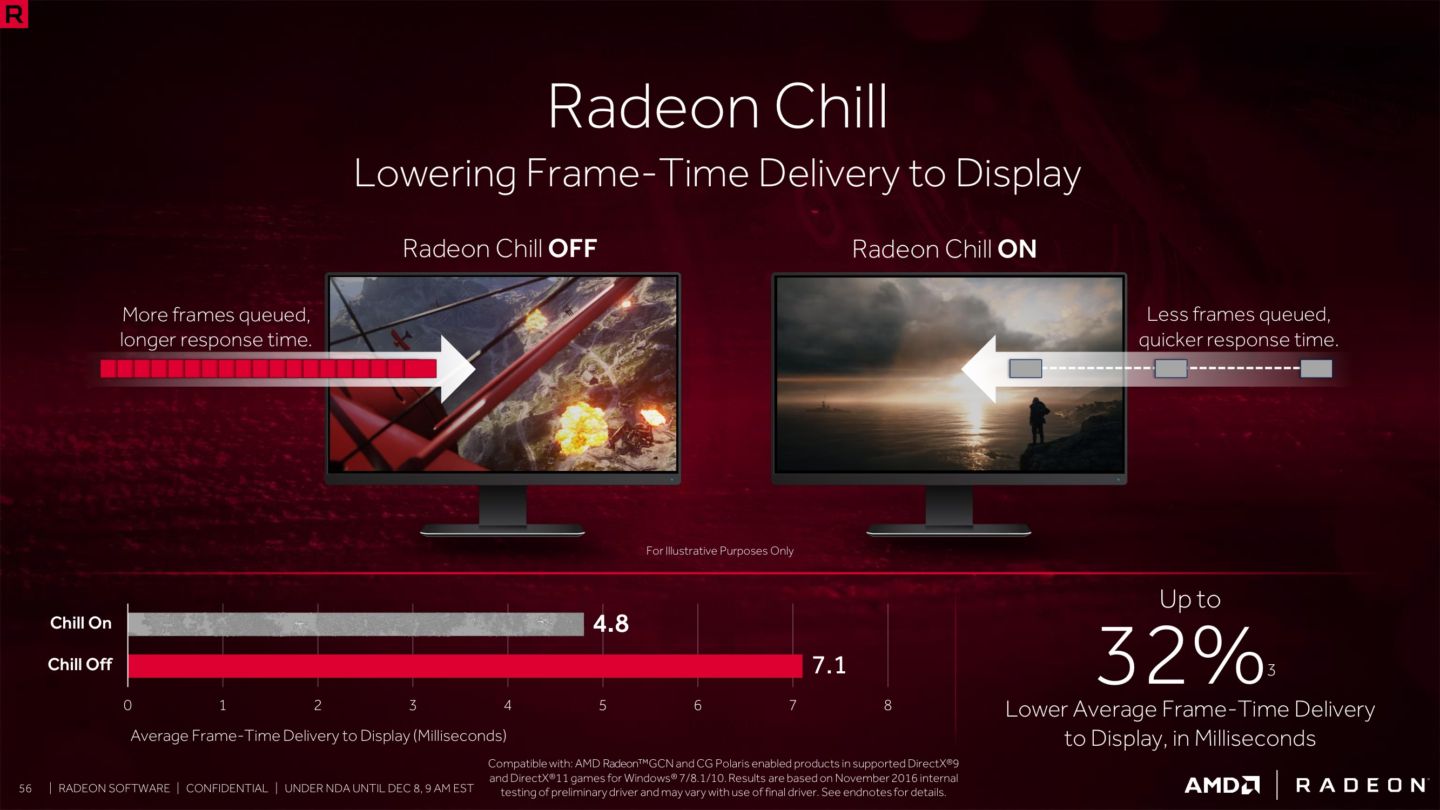During periods of low user interaction or little action on screen the CPU and GPU power limit is reduced, causing the hardware to slow down ... one side-effect of this means that fewer frames are queued in the buffer, which AMD claims it results in a quicker response time from frame generation to frame output.Reducing CPU power means that any ramp up from the slower state will have to be very fast in order to ensure no latency from increased CPU time. Absent hardware based frequency shifting, which is the case for pre-Skylake Intel CPUs, this can take up to 100ms although the time is typically closer to 20ms. So that's at least on or two frames depending of input lag depending on refresh rate. And aren't the frame queues around 3 at most? Or is that OpenGL only? Or was that VSync and triple buffering?

Time for real world testing.
TechReport did just that and noticed frame times with Chill enabled were occasionally faster than with Chill disabled.
That result does seem to mesh with AMD's claim that Chill can improve responsiveness by keeping more of the GPU available for times when fast rendering in response to user input is needed.But that might just be part of the story. The real test will require the mice + led switch and high frame rate capture analysis. Paging systema.
No comments:
Post a Comment
Note: Only a member of this blog may post a comment.